Friday 4th December 2020
I’ve had a look in a bit more detail at the fifteen ideas for Restoring Your Railways recently awarded up to £50,000 each to investigate whether they have a realistic business case. I can only offer a ‘back of the envelope’ view but I reckon I won’t be far out, especially if more knowledgeable readers chip in with helpful additional comments. (If you’re really keen, my review of the first ten short-listed proposals announced at the end of May can be found here.)
Of the fifteen latest short-listed proposals, five are for station openings – which is a bit odd, as there’s also a pot of money called the New Stations Fund for those, but I guess you can’t get enough funding streams when it comes to putting out feel good news about railways.
The first new proposed station is at Ferryhill on the East Coast Main Line between Darlington and Durham, just north of the junction where the freight line turns off to Stockton-on-Tees. The previous Ferryhill station closed in 1967 but there is an area known as Ferryhill Station including a Ferry Station Primary School. A proposal for Ferryhill Station has often been linked to a more ambitious idea of reopening the Leamside Line which could provide an alternative to the East Coast Main Line north towards Newcastle, but that hasn’t reared its head in this round of proposals.

Ferryhill’s population at 10,000 is more than many places on the short list but I reckon it’s still going to be tough justifying building a station and whether there will be train paths available on the busy East Coast Main Line which is already having mega-millions spent on it to ensure more long distance express trains can run without interruptions. Even if the station can be justified, I doubt it’ll be easy for trains to stop there.
Business case likely success: 6/10
Second new proposed station is Beeston Castle and Tarporley on the Crewe to Chester line, which currently has no stations on this 20 mile stretch. There used to be a station to serve Tarporley as well as nearby Beeston Castle but this closed in 1966 due to lack of passengers.

I’m guessing this would be one of the easiest reopenings to achieve, but would it really generate enough passengers? Population of Tarporley as well as the adjacent village of Rhuddall Heath is little more than 2,500. It’s currently served by hourly Arriva bus route 84 (from Crewe) giving a 30 minute journey time into Chester. More pertinent the village is almost 2 miles from the railway line meaning the infamous ‘last mile’ problem will need to be solved.
Business case likely success: 2/10
Third new station is at St Annes Park in Bristol on the line from Bath; it closed in 1970 and its proposed re-establishment is part of the MetroWest project in this West of England conurbation although I notice it wasn’t marked on the official map of MetroWest proposals but is on a map provided by “Friends of Bristol Suburban Railways”.


There’s a lot of money already going into the MetroWest plans with a new station at Portway Parkway which is well on the way to opening soon. I suspect St Annes Park will be quite a way down the list of Bristol developments.
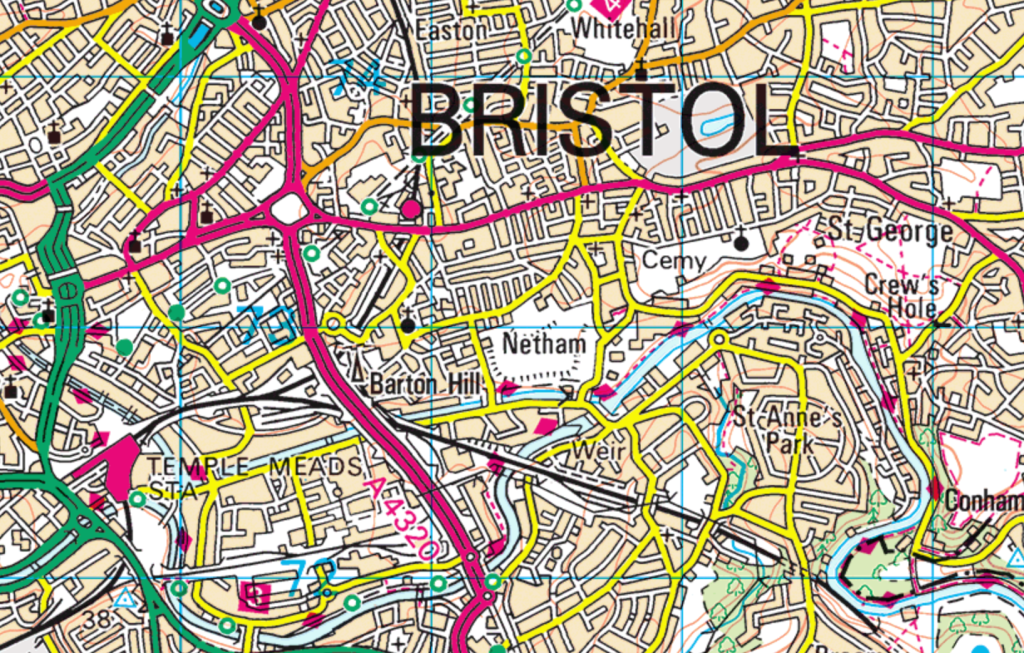
Business case likely success: 5/10.
The fourth new station is proposed for Langport and Somerton between Castle Cary and Taunton, albeit the two communities are four miles apart so I’m not sure where it’s envisaged the new station would be located. Along with all the other small stations on this section of line served by GWR, Somerton closed in 1962 as did a station at Langport East.

Population of Somerton is 4,300 while 1,000 people live in Langport so it’s not going to be an easy business case to establish especially as GWR trains on this section of line fly by often running non-stop between Reading and Taunton. There are some stoppers which already call at Newbury, Pewsey, Westbury and Castle Cary so I guess these could add another stop off for Somerton if the numbers justified it.
Business case likely success: 3/10.
The fifth and final new station idea is at Waverley, not the Edinburgh one, but a small area to the west of Sheffield city centre between Darnall and Woodhouse on the line to Lincoln. Unlike all the other proposals for new stations this doesn’t seem to be restoring a former station at this location, or at least I can’t find a reference to one, so I’m not sure why it’s on this list at all.

However, an Advanced Manufacturing Park is sited here, which was made famous as being the location of the ‘Battle of Orgreave’ in the 1983/4 Miners’ Strike. Tenants on the AMP include Rolls-Royce and McLaren.
Business case likely success (even though this isn’t Restoring anything): 7/10
After five new stations we come to proposals to enhance services on two existing lines – so not so much Restoring Your Railway but Making Your Railway More Frequent.
One is listed as the Truro to Falmouth branch line and the other is Preston to Blackpool South. The former saw an improved frequency in 2009 when a passing loop was installed at Penryn while the latter has long been the poor relation of services to the Lancashire resort compared to the more frequent line to Blackpool North.
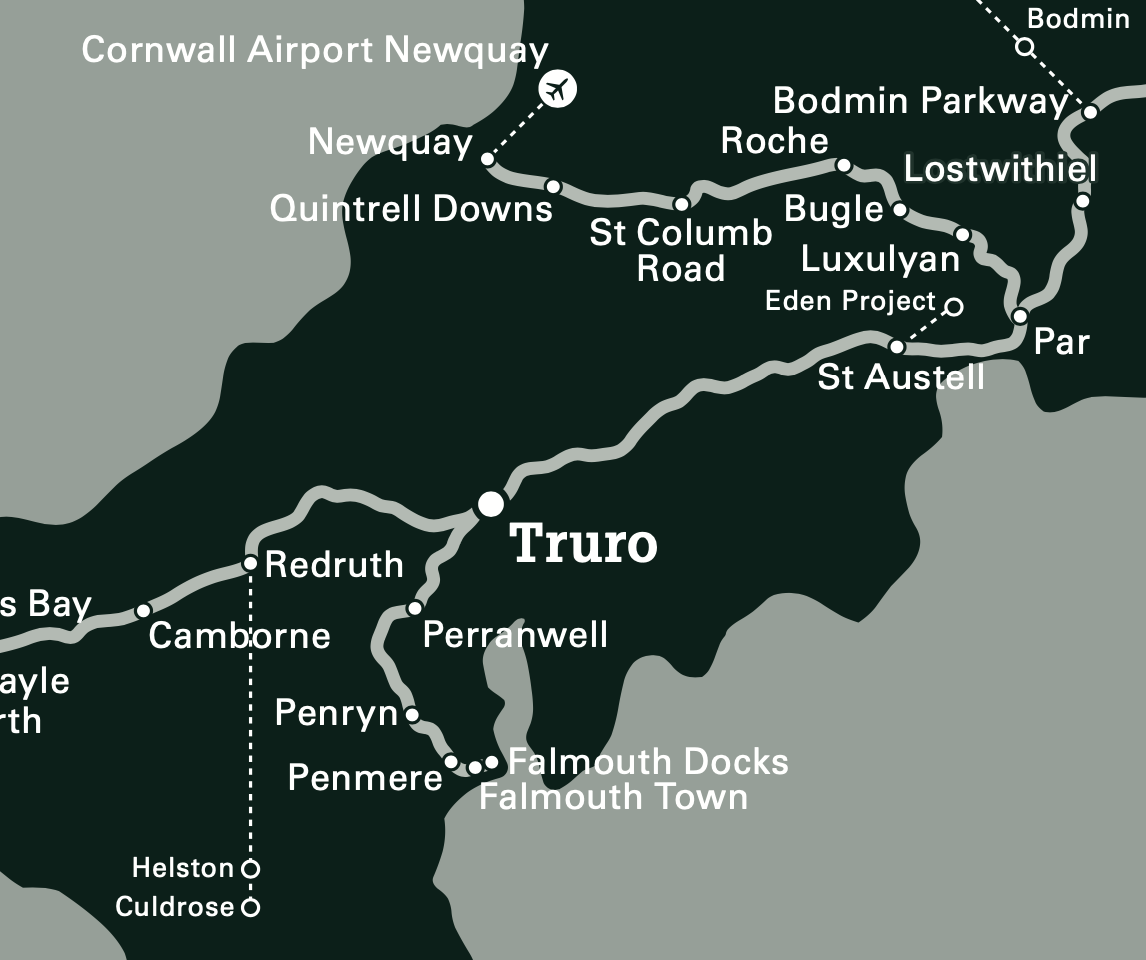

I assume both proposals involve more passing loops or double tracking and both serve popular tourist areas making for a solid base on which to build a business case.
The Truro to Falmouth proposal may be part of a more extensive Mid-Cornwall Metro plan which would create a coast-to-coast service connecting Newquay, Par, St Austell, Truro, Penryn and Falmouth. The local MP, Cherilyn Mackrory is championing the idea saying it will provide much improved ‘connectivity’ (that word again) across the County not least for students attending university at Penryn, and she’s confirming it’s just been awarded funding, so must be what the DfT refer to as ‘Truro to Falmouth’. It would certainly speed up cross Cornwall journey times and at the moment Cornwall seems to be favoured as a place to shower money for public transport, while up in Lancashire Fleetwood has already been given an inside track for restoration prior to this funding scheme being announced, so neighbouring Blackpool will probably be a good bet for more, especially as it’s in the north!
Business case likely success for both: 9/10.
Then we come to ideas of actually restoring railway lines as opposed to stations or enhancing existing services and the first five are lines which already partly or fully exist but don’t see passenger trains. The first being between Melton Mowbray and Nottingham. It was part of the Midland Railway’s route between Kettering, Corby and Nottingham which closed to passengers in 1967 and to freight in 1968 when it was converted into a test track by British Rail based on Old Dalby. Over fifty years later it’s still used as a test track today so somewhere else would have to be found for that if this proposal was to succeed. Another physical constraint is the line runs out on the outskirts of Nottingham, south of West Bridgford, and looks like it’s been built over, so I don’t think that’ll go down well with people who now live in the way.

Assuming the plan envisages extending trains currently terminating in Corby on to Nottingham, as used to be the case, it seems to be an expensive way to provide such a link but around 100,000 people could benefit (population of Corby, Oakham and Melton Mowbray).
Business case likely success: 4/10.
(Update following comments: this proposal may not involve reinstating the line through Old Darby after all but instead make use of the Syston Curve just north of Leicester and use the Midland Main Line. This is hardly ‘Restoring Your Railway’ but more just adding to existing services. I can’t see it being justified and therefore downgrade to 2/10.)
The second is upgrading the freight only line between Alfreton and Kirkby in Ashfield known as the Maid Marian line. The idea is to provide an enhanced service at the top end of the Robin Hood line (this is Nottinghamshire you know, hence all the Robin Hood references) including stations at Mansfield Woodhouse, Mansfield, Sutton Parkway and Kirkby-in-Ashfield which could link through the reopened line down to the proposed HS2 station at Toton.
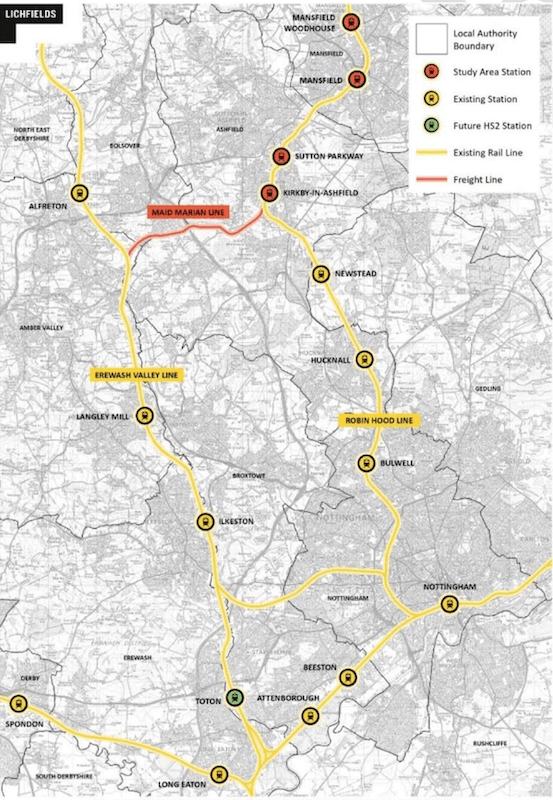
That stretch of HS2 has yet to be given Parliamentary approval so this may be a little premature but there are aspirations to improve ‘rail connectivity’ in this part of Nottinghamshire in any event so the proposal may get some reaction.
Business case likely success: 6/10.
Next is reopening the line between Stratford Upon Avon, Honeybourne and Worcester/Oxford. As with the Old Dalby test track above, part of this line still exists between Honeybourne and Long Marston and is used to test trains. Known as the Quinton Rail Technology Centre, the 135 acre site includes a two-mile test track including a section of electrified line. Porterbrook took a 215 year lease on the site earlier this year.
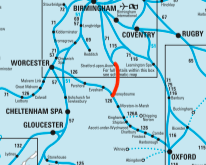
The current dead end of railway line coming down from the north into Stratford Upon Avon hasn’t made much sense ever since the line south to Honeybourne was closed in 1977. It’s meant an awkward low frequency service from London and the south (provided by Chiltern Railway). Restoring this railway would provide a very useful direct link between the two major tourist hot spots of Oxford and Stratford Upon Avon as well as links from Worcester. Much of the track bed of the lifted section of track north of Long Marston looks available too, although it might be more tricky within Stratford Upon Avon itself.
Business case likely success: 8/10.
The fourth line that already exists is between Wareham and Swanage where the proposal is to reinstate a service that last ran in 1968. Fortunately the heritage Swanage Railway Company worked hard in the 1970s to reinstate the withdrawn tracks and in summer 1979 a passenger train ran over a few hundred yards of track at Swanage station once again. By 1995 trains had reached Corfe Castle and more pertinent to the current proposal in 2007 a signalled controlled connection to the national network was reinstated which enabled Swanage Railway to run summer trains on certain days from Wareham to Swanage for the first time in almost fifty years in 2016.

Even more exciting was South Western Railway running trains on summer Saturdays from their network through Wareham to Corfe Castle in 2018 and a few times in 2019. It’s not clear how the proposal to reinstate trains would impact the Swanage Railway Company but bringing Swanage back to the national rail map would be a popular move in this busy tourist town.
Business case likely success: 8/10.
Fifth proposal for putting trains on to tracks which already exist is to reconnect Gainsborough with Barton-upon Humber in North Lincolnshire. Currently just a few trains run only on Saturdays north beyond Gainsborough on the line via Kirton Lindsey and Brigg to Barnetby and on towards Cleethorpes; after Barnetby the plan is to run more frequent trains on to the stub of a line up to Barton-upon-Humber (which usually has trains only to Cleethorpes).

This would ‘restore’ trains taking the west to north route at the junction at Brocklesby (south of Ulceby) and provide a link between what’s described as “three of North Lincolcnshire’s vibrant market towns” (Barton, Barnetby and Gainsborough) and “would carry huge economic benefits, opening up employment opportunities and supporting our visitor economy while also supporting ambitions for clean growth” according to Councillor Rob Waltham, Leader of North Lincolnchire Council.
Business case likely success 6/10.
(Update following comments: this low density populated part of the country can’t really justify a more frequent service simply linking Barton with Gainsborough over a line that has not even succeed in justifying the case for a regular weekday service to the bigger draws of Grimsby and Cleethorpes so the business case success now is downgraded to 2/10.)
Finally we come to the real kite flyers; restoring three lines which have completely disappeared after their Beeching closure.
First is Consett to Newcastle. This really is up there with other Johnsonian style madcap ideas (relocating Heathrow to the Thames Estuary; building a bridge linking Scotland and Northern Ireland etc). No coincidence the North West Durham constituency (which includes Consett) turned Tory in last December’s election and new MP Richard Holden is already quoted as asking the Prime Minister in Parliament to “back plans for a new rail line between Consett and the Metrocentre”. Interestingly rail links between Consett and Newcastle, such as they were, had been withdrawn even before the Beeching report.

I’m not sure whether Mr Holden has noticed the recent excellent investment in the many bus routes plying their way between Consett and Newcastle which already provide top quality public transport. Might be worth his while to take a look.
Business case likely success: 0/10.
Second is Bolton to Radcliffe and Bury. The Bolton to Bury line closed in 1970 while the spur to Radcliffe had ended in 1964. This is another corridor well served by frequent bus routes and I cannot see what could be gained through reinstating long lost tracks. There must be something about this east-west corridor though as a similar proposal to reinstate the Bolton-Heywood-Rochdale line gained funding in the first round of Restoring Your railway bids, so I guess the logic would be to link both proposals together to form a Bolton-Bury-Rochdale line.
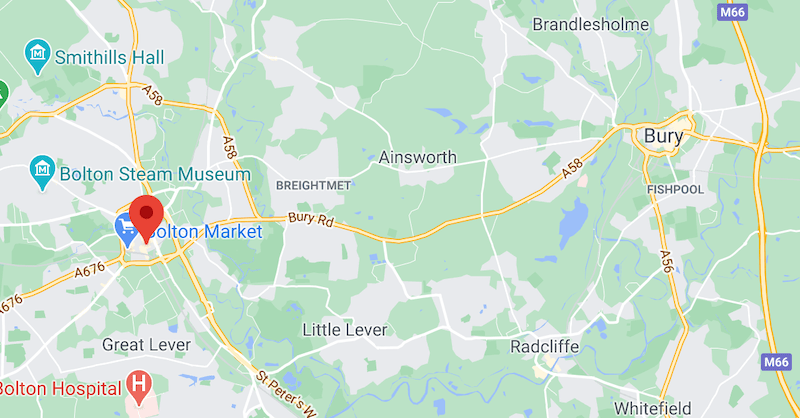
But as noted when reviewing that proposal part of that line is now under the control of the East Lancashire Railway. In any event, it would make sense to consider such proposals as part of an extension to the Manchester Metrolink which already reaches Bury and Rochdale having taken over former rail lines, but ultimately, bus is doing the job well already.
Business case likely success: 3/10.
Third kite flyer is to reopen the Kemble to Cirencester line. This stub of a line off the Swindon to Stonehouse branch closed in 1964. It only penetrated the west side of Cirencester, whereas the centre and east of the town was on a through line from Swindon to Cheltenham via Crickade and Withington which closed pre-Beeching in 1961.
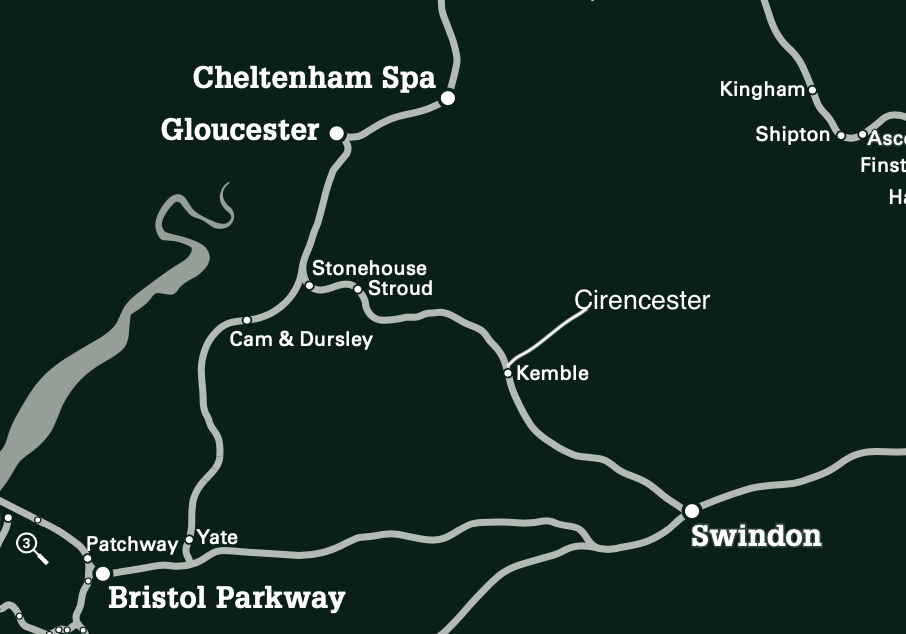
The idea of running trains into a stub end at Cirencester (population 19,000) from Kemble (population 1,000) is completely bonkers, but I’m sure consultants will beaver away writing a lengthy report saying how it’ll “improve connectivity”. I see that the idea is to run “a light railway on a single track” which will have “minimal impact on the environment and encourage people to stop using their cars for commuting, so helping our commitment to combating climate change”. Ever heard of a bus?
Business case likely success: 0/10.
The third round of applications for Restoring your Railways closed on 5th June so I assume there’ll be another list of successful bids in due course. Interesting to see no mention of the proposal to reinstate either Colne to Skipton or Uckfield to Lewes – two ideas which have been talked about for many years and I would have thought have more chance of success than some of the ideas already short-listed.
And all this excitement and Restoring Your Railways optimism comes as news breaks yesterday that it’s emerged in the small print the Chancellor’s Spending Review last week cut Newtork Rail’s infrastructure budget by £1 billion in the current 2019-2024 five year period for rail enhancements
Roger French


Would Blackpool South to Kirkham & Wesham be better served by an extension of Blackpool Tram?
LikeLiked by 1 person
After this morning’s report of £1bn being shaved off the rail budget, the brakes are bound to be put on some of these, I guess. Of course, especially given the current climate, if HS2 were to be mothballed, there would be plenty to do these schemes and more.
LikeLike
As a former resident of Ferryhill There is actually a separate settlement of Ferryhill Station but it has merged long ago with the main town. I would welcome a new station and one can be built off the main line easily with loads of space for a car park. The problem is ECML capacity. The Northern Connect aspirations to run a fast Newcastle Middlesbrough service via the Stockton Ferryhill line could not go ahead because of this. If space can be found for that service then Ferryhill makes sense, without it , or Leamside, it can’t work as a local service
LikeLike
Not only are the ‘sensible’ schemes Colne – Skipton and Uckfield – Lewes missing from the list, but also the third ‘sensible’ and long standing scheme is waiting to happen, Okehampton – Tavistock – Bere Alston (for Plymouth).
All the while that no-hopers are treated to mob=ney being burned off on consultants’ studies, the more sensible schemes drop further back from implementation.
LikeLike
Oops, for mob=ney, please read ‘money’ !
LikeLike
The DfT reports on this underline that their map doesn’t go north of Watford, with just ‘Here be dragons northwards’. The inference is that Melton – Nottingham line is the Test Track. Alas no. If you look at earlier iterations, the scheme is to link Melton to Loughborough and Nottingham via the Syston Curve. A bit of railway that exists and already has a very limited service.
The Maid Marian proposal has raised a few eyebrows locally. Mainly Midlands Connect with Transport for the East Midlands, have an extensive package of links proposed for HS2 at Toton (please, NOT Totton) and funding will be sought under that umbrella. So pulling this bit of railway out of the hat is a little odd. I guess to support local housing development it makes sense to push it forward now, but I would rather see everyone singing from the same hymn sheet and the HS2 package not fragmented. I missed this in the earlier iterations as DfT had it in the West Midlands.
More advanced (not that anything has happened) in this area is the extension of the Robin Hood Line north of Mansfield, to Ollerton. Not a word on that, but it was part of the EMR franchise to take a look at the feasibility of this. And silence there is from EMR, but currently I guess that is to be expected.
Although good news I am cynical. It is small money and local MPs are jumping on board. Good that suddenly, MPs learn there is a railway/station on their patch or could be. It is a tiny outlay for the amount of positive media coverage that the MP gets. But mustn’t knock it, got to start somewhere.
LikeLiked by 1 person
Thanks for the clarification re Syston Curve. Will update Toton too.
LikeLike
The Gainsborough Central – Barton-on-Humber proposal is absolutely ridiculous.
The Gainsborough Central – Brigg – Barnetby section has repeatedly failed to achieve funding for the current Saturday only Sheffield – Brigg – Cleethorpes service to be reinstated to daily, so diverting the proposal from the viable market of Grimsby/Cleethorpes to the rural backwater of the Barton branch is more a demonstration of parochialism by North Lincolnshire Council (note that the new proposal is solely within the NLC area, no longer involving NE Lincs Council) than any attempt to come up with a proposal with any actual business case.
The area is struggling to maintain viable bus services, so the chances of a viable passenger service Barton-on-Humber – Ulceby – Barnetby – Brigg – Gainsborough Central (-Sheffield)? Forget it.
It’s as pointless as any of the other manic proposals and really doesn’t deserve your 6/10 score. I’d give it 2/10 at best.
LikeLike
Many thanks for these commens – have updated the post with downgraded score!!
LikeLike
Ferryhill has a line called the Stillington Line going off heading to Norton where it joins the Durham Coast Line, there use to be a dead end line which went to a quarry too then a touch further up the Leamside Line went off and joined the Durham Coast Line in Gateshead.i think that it was still GNER when the Stillington Line was last used for passenger diversions with trains diverted via Egglescliffe and Durham up the Stillington,I don’t know if they ran up the Northallerton Egglescliffe or reversed at Darlington or a combination of the two.also I’m not sure if the Stillington Line is still used by freight and I have never seen anything going on or off it, the lines look rusty from the Norton end.the main freight movement thereabouts seem to be class 66 hauled biomass trains which run from Jarrow to the East Midlands via the Durham Coast Line.another one around there but with zero passenger potential is the Port Clarence and Seal Sands branch which runs off in Billingham and I guess is disused?
LikeLike
Barnard Castle is actually in the Bishop Auckland constituency, although Barney and Consett were put together in plans for boundary reform near a decade ago, its never actually happened, a bit like Nexus wanting to extend the Metro to Consett for many years too.
LikeLike
Thanks for that. I’ll update the post.
LikeLike
Every time theses reports come out it sets off the locals demanding the Cranleigh line be reopened, at least Surrey County Council and Waverley Borough Council saw sense to preserve its routing.
LikeLike
The fifteen proposals listed above are from the second round of submissions that had a deadline of June 2020. The third round of submissions had a deadline of November 2020.
I understand that the Skipton-Colne and Brighton Mainline 2 proposals are bidding for funding from a different pot of money known as the Accelerating Existing Proposals fund. No information has been released yet regarding bids or awards for this pot of money.
Personally, I would review the score offered to Stratford Upon Avon to Oxford via Honeybourne. Getting out of Stratford Upon Avon will require extensive civils works due to the construction on the track bed of a new link road. The current proposal is to dig under the road.
LikeLiked by 1 person
One thing that may lean in Ferryhill’s favour is that there are plenty of tracks/sidings at the station site, so it’s entirely possible that they could put platforms on loop lines, allowing a fast train to come through while a train is stopped at the station. Time it right and maybe you could have one of the two TPX trains every hour stopping at Ferryhill *and* Chester-le-Street, improving services there as well. This might be a way to get around the capacity constraints on that line.
The Falmouth branch already runs every 30 minutes … if there’s demand to increase that then great, but is it really there? Maybe if it allows better connections with mainline trains then there might be a call for it, but the passenger numbers don’t suggest any need to run more trains.
The mid-Cornwall metro seems like a pretty mad idea.
The Newquay branch at the moment is crap, there’s really no other word for it. But apart from Newquay itself, there’s no reason for the line. A handful of tiny village stations that between them generate only about 10,000 passenger journeys a year – even with a worthwhile service, it’s hard to see those numbers rising significantly. Trains to Newquay are too infrequent to be of any use and only take you to Par, where onward connections are dismal. Reinstating a curve to allow trains to run direct from the branch line to/from St Austell might help, as that must surely be one of the main destinations for passengers, and you would need some passing loops to increase the frequency to hourly … but running through to Truro? It’s such a circuitous route that it would be slower than the bus (3 or 4 journeys per hour, fastest route takes about an hour). A better bet might be to reinstate the link to the St Dennis freight line and run trains into St Austell that way, it’s 7 miles shorter so you could save 10 minutes on the journey. The disappearance of Luxulyan, Bugle and Roche from the list of stations would be a loss to those who appreciate poetry but of little consequence from a transport perspective.
I don’t know how anyone could describe Barton, Barnetby or Gainsborough as “vibrant” 😂
LikeLike
Very interesting – many thanks. I had a good look out of the train window as we sped through Ferryhill on my trip yesterday and agree there’s quite a lot of space and lots of sidings/lines etc.
LikeLiked by 1 person
Chester le Street and Ferryhill would probably be better served a fast Middlesbrough Newcastle service running via Stillington this would take pressure off the ECML,south of Ferryhill at least.Better still in the Leamside was reopened then hardly any pressure on the ECML except at Ferryhill but obviously Chester le Street would have to be missed out.the current Middlesbrough Newcastle local service is very slow via the Durham Coast and the faster service via Darlington and the ECML has been cut to commuter times only.
LikeLiked by 1 person
The Somerton / Langport area station is seen as a rail head for the greater area including Street, Glastonbury and Wells (pop. about 33,000) with tourist as well as residential use. The station at Castle Cary is the nearest, but there is no public transport and the roads are not great. The recommended station tends to be Bristol TM and the 376 bus every 20 mins, but taking 90 mins to Glastonbury.
It fits in to some extent with the reopening of Wellington and Cullompton stations which are more advanced with recent extra funding.
LikeLiked by 1 person
The issue is when a station is kind of out of town, unless there is a frequent bus that already goes past it bus companies won’t make a worthwhile link, and then if people need to drive to the station they feel like they might as well drive the whole way.
LikeLiked by 2 people
For the Tarporley station, let me tell you, it’s useless. Pie in the sky idea. Whoever approved giving the money for that scheme wants sacking for misuse of public funds.
Tarporley only holds onto the hourly bus service because of people travelling longer distances and because of school kids from Tarvin (which make a lot of money). If it wasn’t for that, the bus service would be subsidised. The bus was cut down in 2016 as well from half hourly to hourly due to lack of usage. The demographic of the local area is very elderly who often tend not to use the trains and opt for local buses because they can use the free bus pass.
The station would be opening for an hourly service (as I can’t see Avanti serving there). The shuttle service is already tight on time (24 mins each way with 6 mins turnaround) and with the class 230s coming in soon to replace the class 150s, journey times will increase (due to the lower max speed). Combine that with the fact stopping the train here additionally would be another minute off the turnaround time, this station isn’t just going to cost the actual station construction fees but it will also cost an extra unit to run the service as it would be impossible to keep the even frequency using the 1 train. It’s something which has been massively overlooked.
LikeLiked by 2 people